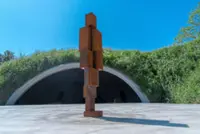Multidisciplinary production 'bhumiMATA', with a predominantly Penang-based cast, celebrates elements of classical, ritualistic, and contemporary dance forms. It is one of the George Town Festival's closing weekend highlights. Photo: David and Esther Khoo
For the unacquainted, bhumi mata means “Mother Earth”. The first thoughts that come to mind when one thinks about Mother Earth would most likely be topics about the environment and climate change.
While that is not wrong, the multidisciplinary production bhumiMATA seeks to go deeper than that.
Already a subscriber? Log in
Save 30% OFF The Star Digital Access
Cancel anytime. Ad-free. Unlimited access with perks.





